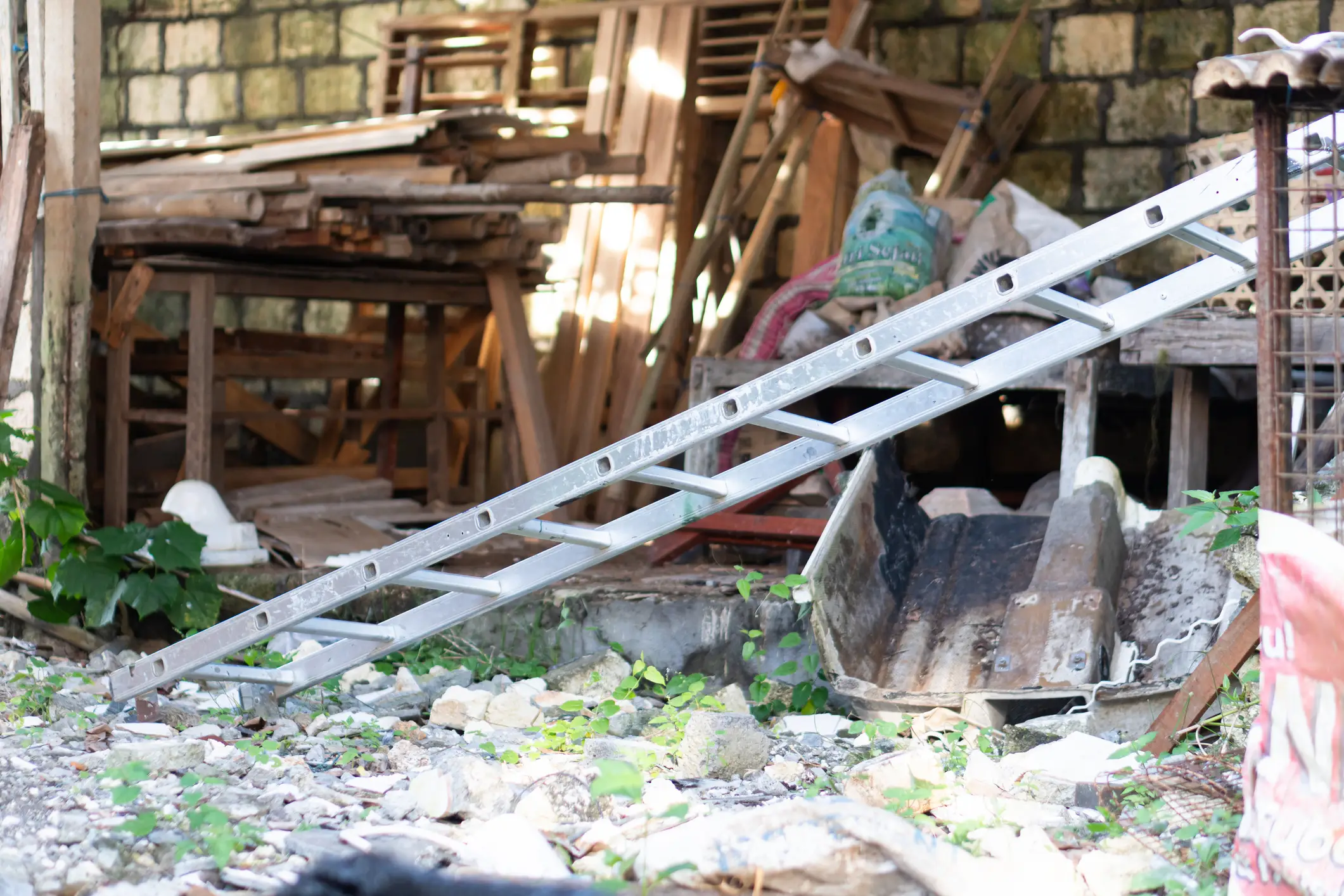Ladders are one of the most commonly used tools on construction sites, in installation and repair trades, and residential homes across the nation. However, they’re also one of the most dangerous. Half a million people suffer ladder-related injuries across the United States every year. Hundreds more are killed.
Even professionals who receive ladder-specific training – as is sometimes required by law – can get seriously injured in a ladder accident when things go wrong. Understanding how and why most ladder accidents occur can help you stay safe. Here, our team breaks down five of the most common reasons for ladder accidents and how you can avoid them.
Carrying Objects While Climbing a Ladder
Ladders can help you complete tasks on elevated surfaces or structures that are out of your reach. Chances are, you’ll need some kind of tool(s), material(s), or equipment after you’ve scaled the ladder. Unfortunately, getting those materials up the ladder can be incredibly dangerous. Whatever you’re carrying – like paint, power tools, or cleaning materials – will make it much more difficult for you to climb safely by:
- Altering your balance
- Preventing you from keeping three points of contact on the ladder at all times
- Blocking your field of view
- Reduce your grip on the rungs
All of these things will significantly increase the chances of falling off of the ladder or even dropping the objects you’re carrying, which can potentially hurt someone working below. If you’re going to need materials, it’s best to use a pulley system, have them brought up by a forklift or another piece of machinery, or assemble a scaffold for a more stable work area.
Setting Up a Ladder at the Wrong Angle
It’s essential to understand physics and geometry when working with ladders. Ladders will only be stable when placed at an appropriate angle. When using a leaning ladder of any kind, you’re encouraged to use the 4-1 rule. The base of a ladder should extend out one foot for every four feet in height to the ladder’s point of contact with a structure. If you’re using an 8-foot ladder, the bottom of the ladder should extend two feet from the base of the structure. This creates a 75-degree angle for maximum stability as you climb and descend the ladder.
Sometimes workers choose a ladder that’s too short for the job and, to compensate, place the base of the ladder close to the side of the building they need to climb. The angle is too small, making the ladder more susceptible to failure.
Wearing Improper Footwear While Using a Ladder
Wearing the wrong shoes – or no shoes at all – can make slips and falls more likely when you’re using a ladder. If you wear worn-out shoes, flip flops, sandals, or other unsecured footwear, your foot will be more likely to slip as you climb up or down the ladder – especially if you’re also carrying something. You’ll want footwear with good tread and grip so that you can maintain good contact with the rungs as you climb.
Placing the Ladder on Uneven Ground

It’s not just the angle at which you place a leaning ladder; it’s also where you decide to put the base. Both feet of a ladder must be placed firmly on a level surface.
If you set the ladder on a slope or rocky terrain, it’ll become much less stable and unsafe to climb. As you climb, the ladder could tilt, shift, or even fall backwards away from the structure.
Depending on where you’re setting up the ladder, you can fix this by digging holes to even the terrain or shimming the uneven leg. Alternatively, you can choose a leveling ladder with individually adjustable legs. The legs can be extended as necessary to create a level, firm base on the ground, thereby increasing overall safety.
Using a Broken or Defective Ladder
Just like other pieces of equipment, ladders should be inspected regularly. Negligent ladder maintenance can cause you to miss:
- Broken or missing rungs
- Cracks
- Damage
- Decay
- Worn-out non-slip surfaces
- Missing screws or fasteners
- Missing non-slip feet
- Debris, paint, or chemicals that could make it slippery
Any of these things can render a ladder unsafe and increase the chances that it (a) breaks during use or (b) causes you to slip and fall. The simplest way to avoid ladder accidents caused by malfunctions or defects is by doing a once-over on the equipment at regular intervals. Always inspect a borrowed ladder or a ladder that hasn’t been used for some time before use.
If you’ve been hurt in a ladder accident in New York City, it’s important to consider your legal rights and options – especially if you got hurt on the job. Compensation may be available, including money for your lost wages and medical bills. Working with an experienced New York ladder accident attorney at The Platta Law Firm can help you maximize your recovery. Call our award-winning New York trial attorneys at (212) 514-5100 to discuss your ladder accident case for free today.


